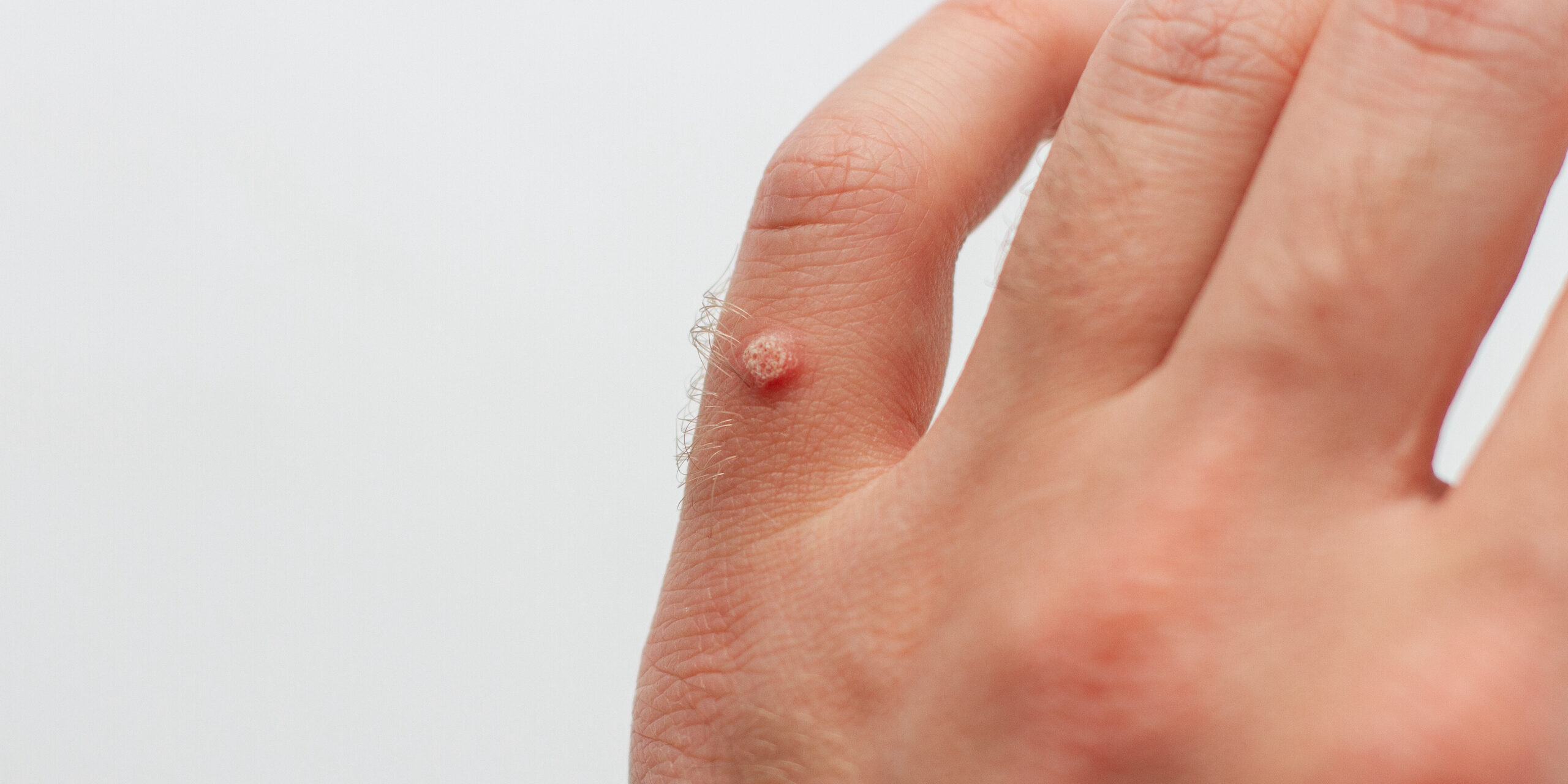Warts are small growths that can appear anywhere on your skin. They are usually harmless and go away on their own over time – but most patients want them gone ASAP!
The skin care experts at The Derm are here to help you say goodbye to wart worries, starting now. If your warts won’t stop growing, hurt or bleed, are a cosmetic concern, or interfere with your daily activities, we can safely remove them for you.
However, not all warts are created equal. Keep reading to learn about the types of warts you might get, how we diagnose them, and what your treatment options are.
What are warts?
Many of our patients say, “A nuisance, that’s what!”
Warts are non-cancerous growths caused by the human papillomavirus virus (HPV), which means they are contagious. They are most often spread by skin-to-skin contact with the wart or something that touched the wart (such as towels, razors, clothing, or any shared items). HPV can live on surfaces for up to six months, especially in warm and moist environments like shower floors or gym locker rooms.
Warts are usually skin-colored and feel rough, but they can also be dark (ranging from brown to grayish-black), smooth, or flat. Some warts contain black dots, which are tiny clotted blood vessels.
You are more likely to get warts if your skin is cut or damaged in some way. It may take a few months for warts to grow large enough to see.
Types of warts
Dermatologists classify warts based on how they look and what parts of your body are affected. For instance:
Common warts
Common warts usually appear on your hands or fingers. They are more likely to occur when your skin is broken, such as from biting fingernails or picking at hangnails. Common warts often feel like rough bumps and may have black dots inside. Their size can range from a pinhead to a pea.
Plantar warts
Plantar warts tend to target your feet, specifically the soles. They are often flat and grow inward, but may also contain black dots. Plantar warts can grow quite large, which may cause pain when you stand or walk.
Flat warts
Flat warts can grow anywhere on your body. Women tend to get them on their legs, men in their beard area, and children on their face. Flat warts are usually smaller and smoother than other warts, but also grow in larger numbers (20-100 at a time).
Genital warts
Genital warts are a sexually transmitted infection (STI) that affects your genitals and/or rectum. The warts are passed to sexual partners through skin-to-skin contact. Genital warts are small, hard nodules that may itch, burn, or bleed.
How we diagnose warts
Your dermatologist can usually tell if you have a wart just by looking at it. In rare cases, we may need to perform a skin biopsy to be certain.
Treatment options for warts
Warts do often go away on their own, but it can take up to two years. If warts are affecting your daily life for any reason, it’s time to consider professional treatment. Your wart treatment options include:
Topical treatment
There are many over-the-counter options for wart removal – most of which use salicylic acid to dissolve warts one layer at a time. However, you may need to use the product every day for several months to completely get rid of the wart.
For faster results, we can treat the wart with cantharidin, a chemical that forms a blister under and around the wart. You must return to the office the following week to have the dead wart removed.
Freezing
During this procedure, which is also known as cryotherapy, your dermatologist applies liquid nitrogen to freeze the wart. Like cantharidin, the liquid nitrogen causes a blister to form under and around the wart. The dead tissue then peels off in a week or so. Some warts require multiple treatments for complete removal.
Laser treatment
If other removal methods don’t work, your dermatologist might suggest laser treatment (also known as photo-based therapy). This procedure uses laser light to heat and destroy the tiny blood vessels inside the wart, cutting off its blood supply. The wart eventually dies and falls off, although minor scarring may occur.
Why play the wart waiting game?
Warts may be harmless but they can have a huge impact on your physical comfort, and even more importantly, how you feel about yourself and your skin.
If you’re ready to be wart-free, there’s no need to wait months or years. The Derm can help you with wart removal now! To learn more about your options, schedule an appointment today.







